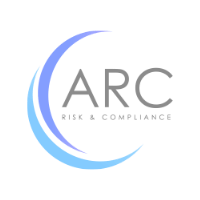Objectives of the Presentation
- KYC: What the Law Requires
- Customer Identification and On-boarding
- The Customer BSA/AML Risk Assessment
- CDD/EDD/On-going Risk Based Monitoring
- The Customer Activity Profile
- Transaction Monitoring
- If the Customer Really is Laundering/Financing Terrorists
Why Should you Attend
There was a time when a wire transfer may come in with the ‘By Order’ party listed as ‘My Good Customer.’ No longer.
That statement sums up AML/KYC Risk. Essentially there is no such thing as ‘My Good Customer.’ All customers, irrespective of origin, charter, impeccability, bring with them risk. The challenge to the financial institution comes in the form of identifying the customer and the customer’s surroundings. It is insufficient to see a customer, whether an individual or legal entity, as someone or something unto itself. Overlooking a customer’s relationships may lead to serious difficulty as the relationship to the institution develops.
This webinar will explore why gathering the required information for the Customer Identification Program is a good start, but knowing what the customer plans to do with the account and actually does with it is also critical to managing customer risk.
Who will Benefit
- BSA/AML Officers
- Compliance Officers
- Chief Compliance Officers
- Sanctions Officers
- AML Analysts
- Risk Officers
- Chief Risk Officers
- Legal Departments
- Risk Managers
- CEO/Presidents
- Banks
- Broker-Dealers
- Money Services Businesses
- Other non-bank financial institutions
Topic Background
Financial Institutions effectively manage their Bank Secrecy Act / Anti-Money Laundering / Office of Foreign Assets Control Risk when they have in place a robust compliance program, one that has (1) a system of internal controls to ensure ongoing compliance, (2) an independent testing program of BSA compliance, (3) a specifically designated person or persons responsible for managing BSA compliance (BSA compliance officer), and (4) training for appropriate personnel. All institutions vary in size, type of products and services offered, customers served, and geographic regions served. At the heart of BSA Compliance lies the institution’s Know Your Customer (KYC) program as developed and enforced in its Customer Identification Program (CIP).
It is axiomatic that some products and services carry a higher risk than others, like USD Dollar Clearing and Trade Finance as opposed to CDs and IRAs, that some geographies have a higher risk than others, like North Korea and Iran as opposed to the United States and Canada. But no matter what products and services and geographies carry a higher risk, no product, no service, no country has ever conducted a money laundering or terrorist financing activity – people do. There is always a person or persons, whether as individuals, companies, governments, charities, behind the activity.
That makes the managing of Know Your Customer Risk a critical component of a robust BSA/AML Compliance Program.
The enactment of the USA Patriot Act in 2001 ended a decade long nebulosity surrounding the development of a rigorous KYC program. The one official attempt to clarify the KYC concept, the 1997 Federal Reserve Notice of Proposed Rule Making on ‘Know Your Customer,’ met with a barrage of criticism because of its notion of the profiling of customers. By contrast, with the background of the 9/11 attacks, the Patriot Act defined: (1) what made up a Customer Identification Program, (2) the conduct of Customer Due Diligence (CDD), and (3) the conduct of Enhanced Due Diligence (EDD). The Patriot Act also encouraged the profiling of customers.
Traditionally, bankers saw customer risk in terms of credit risk, can the customer pay back the loan? On time? While still of vital importance in lending products, the KYC risk equals it. Is this customer related in some way to a criminal organization? A politically exposed person? Is he (or she) fronting for someone? And that’s only for individuals.
And what about businesses? Do I know who really owns the business? Is there someone on the account of whom I am unaware? That manufacturing company, who are its customers? If your business customers are involved with foreign clients, the questions just compound.
Instructor Profile:

Frank Masi, Ph.D. has over 25 years of business and technical experience and holds a doctorate in business and organizational management from Capella University. Over the last 10 plus years, Mr. Masi has worked in the BSA, AML, and OFAC regulatory environment and has consulted in the financial industry providing institutions with enterprise level regulatory software solutions and consulting services in BSA, AML, KYC, P.A.T.R.I.O.T. Act and OFAC.
During his time with FIS, Mr. Masi has worked in the roles of director of professional services managing implementation and consulting services, providing regulatory consulting and software services to the financial industry. He currently serves as the product manager for FIS Risk, Fraud, and Compliance Solutions, managing the AML Premier and AML Enterprise (Prime Compliance Suite) suite of products.
He is an adjunct professor at the University of Phoenix, teaching corporate audit and governance and corporate risk management and also teaches at PACE University the BSA/AML CCRP certification. Currently, Mr. Masi is the EVP operation manager/senior consultant for ARC Risk and Compliance, supporting the consulting services. He continues to manage and provide in depth consulting services in AML/BSA, OFAC, KYC and other regulatory services.



